Is Real-Time Grocery Price Scraping the Future of Data Access?
Feb 04
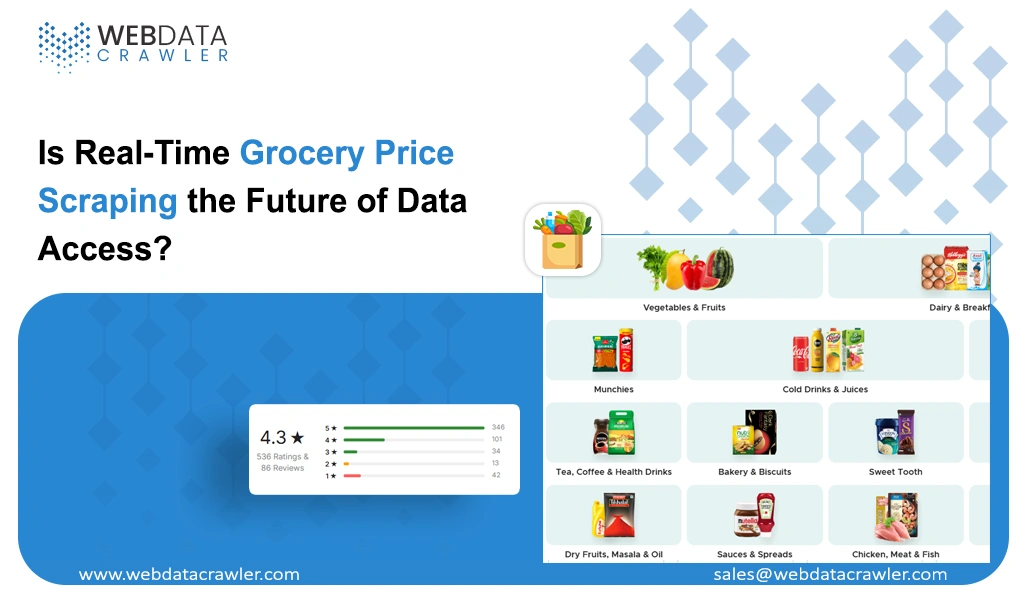
Introduction
The retail grocery sector is rapidly evolving, and businesses, shoppers, and analysts are increasingly seeking ways to stay ahead of market trends, optimize pricing, and manage inventory efficiently. One technology that has the potential to revolutionize how we access grocery price data is Real-time grocery price scraping. This technology provides a wealth of opportunities for companies in the grocery and e-commerce industries, offering them the ability to monitor prices, track trends, and make data-driven decisions.
In this detailed blog, we will delve into what Real-time grocery price scraping is, how it works, its benefits, and its crucial role in shaping the future of grocery data access.
What is Real-Time Grocery Price Scraping?
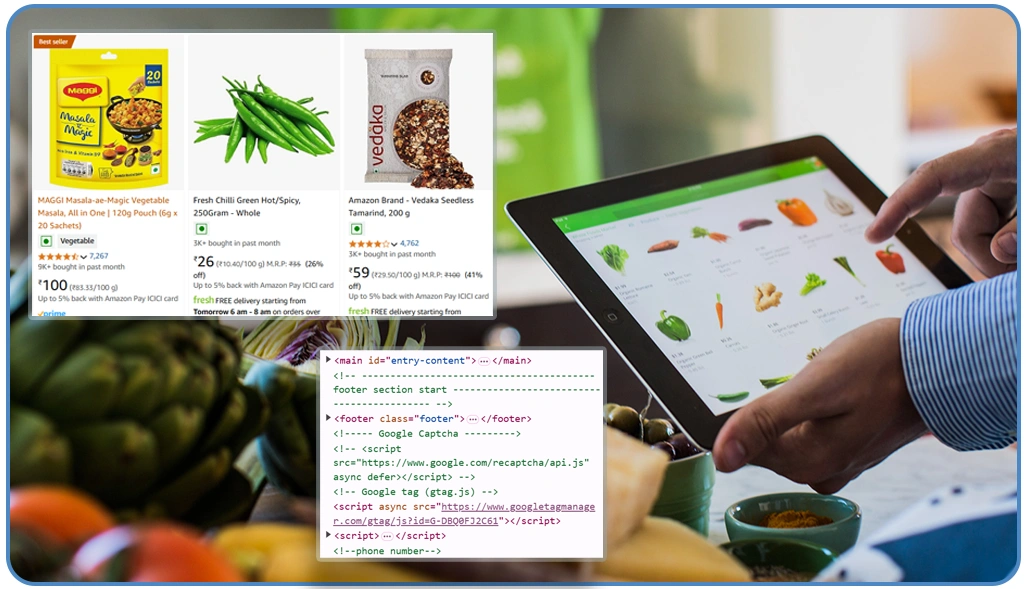
Real-time grocery price scraping refers to the process of extracting real-time price data from grocery websites, e-commerce platforms, and online supermarkets. The goal is to gather up-to-date information on the prices of various grocery products. This enables businesses to track competitors' prices, monitor price fluctuations, and obtain insights into market trends without manually checking each website.
At its core, real-time scraping involves using automated tools, such as a Grocery data scraping API or API for scraping grocery product prices, to collect and present data from multiple sources in a structured, accessible format. Unlike traditional data collection methods, real-time grocery price scraping allows businesses to obtain accurate and timely information that can be used for competitive analysis, price optimization, and market forecasting.
How Does Real-Time Grocery Price Scraping Work?
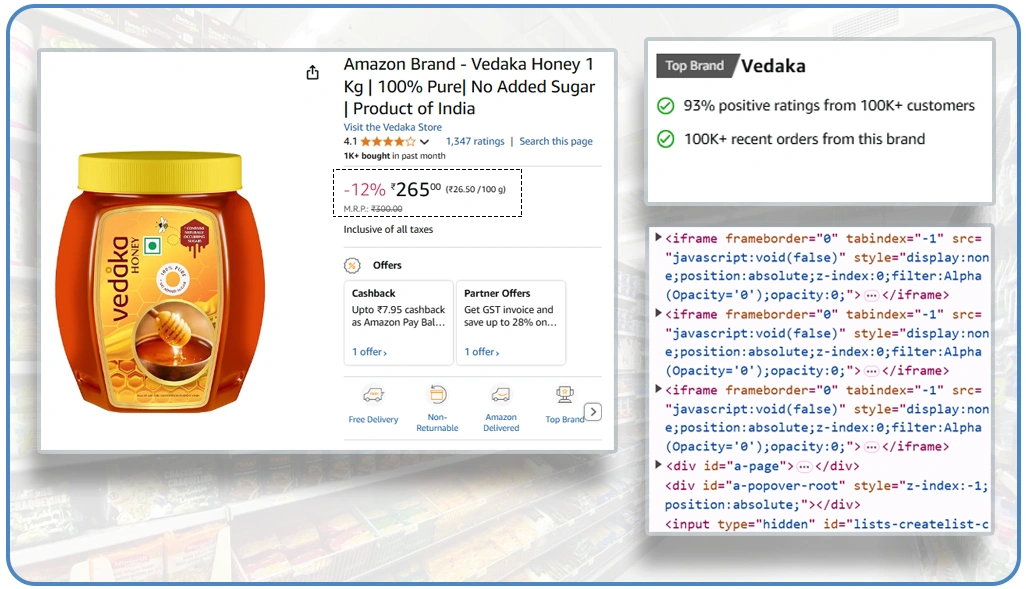
Real-time grocery price scraping works by utilizing automated bots and APIs that navigate through grocery websites, extract relevant price data, and deliver it to the user in real time. This process can be broken down into the following steps:
- Crawling the Website: The first step is to crawl or visit grocery websites and e-commerce platforms. This is done using a Web Data Crawler, which systematically explores the webpages to gather data.
- Extracting Relevant Data: Once the crawler visits the page, it identifies and extracts the relevant data, which includes product names, prices, discounts, and other details. This can be done using a Grocery store data extraction API that enables the identification of specific data points within the page.
- Real-Time Monitoring: After extracting the data, real-time monitoring tools continuously scan the website for price changes, promotions, and updates. This allows businesses to stay informed of price fluctuations and other market dynamics.
- Data Structuring and Delivery: Finally, the extracted data is structured into a readable format, such as a spreadsheet or database, and delivered to the user via a Grocery data scraping API or a Price scraping API for groceries.
This process is highly efficient, fast, and accurate, allowing businesses to make decisions based on the most current data available.
Benefits of Real-Time Grocery Price Scraping
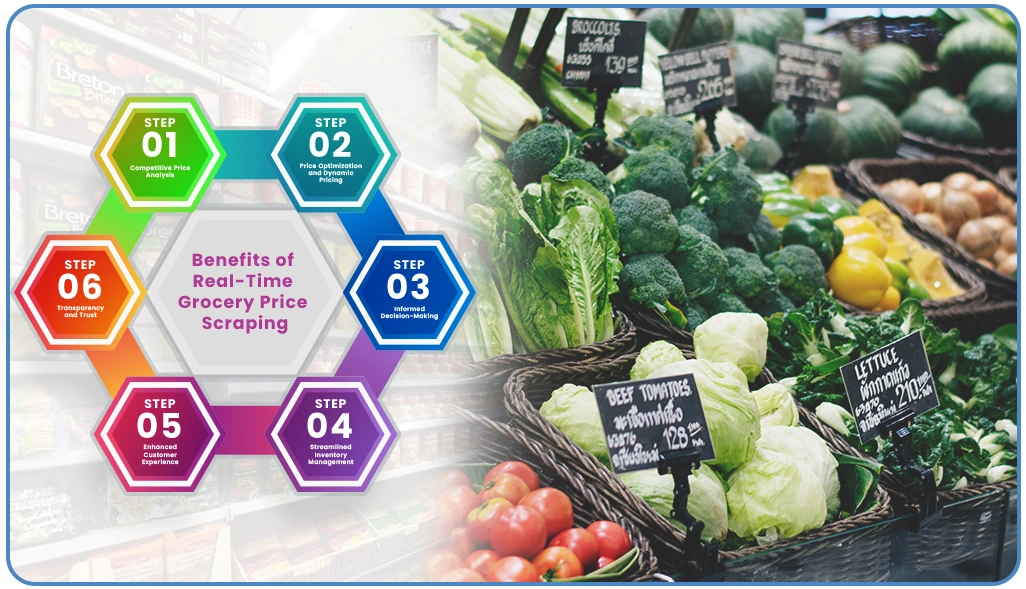
Real-time grocery price scraping offers a wide range of benefits for businesses in the retail and e-commerce sectors. Below are some of the key advantages of incorporating real-time scraping into your business operations:
1. Competitive Price Analysis
One of the primary benefits of Real-time grocery price comparison scraping is the ability to track and analyze competitors' prices in real time. With the help of a Grocery price tracking API, businesses can compare their own pricing strategies with those of competitors, ensuring they remain competitive in a rapidly shifting market. For example, a grocery store can monitor the prices of key products across various e-commerce platforms and adjust their prices accordingly to maintain competitiveness.
2. Price Optimization and Dynamic Pricing
Real-time price scraping for supermarkets plays a pivotal role in price optimization. By continuously tracking prices, grocery stores can implement dynamic pricing strategies, adjusting prices based on demand, competition, and market conditions. This is especially useful for large supermarkets and e-commerce platforms that need to manage thousands of products with different price points.
3. Informed Decision-Making
With access to up-to-the-minute pricing information, businesses can make informed decisions about their pricing strategies, product offerings, and promotions. Data collected through API for scraping grocery product prices can reveal trends in consumer behavior, helping grocery chains and e-commerce platforms develop tailored marketing strategies or adjust their inventory.
4. Streamlined Inventory Management
Real-time data scraping also aids in inventory management. By tracking the prices and availability of products, businesses can better predict demand fluctuations and adjust their inventory levels accordingly. For example, by using a Grocery data scraping API, businesses can track product availability across multiple retailers and adjust their stock levels to avoid understocking or overstocking certain items.
5. Enhanced Customer Experience
Consumers benefit from real-time grocery price scraping too. With the help of Real-time grocery price comparison scraping, shoppers can quickly compare prices across different platforms and make more informed purchasing decisions. This not only saves time but also ensures that consumers are getting the best deal possible.
6. Transparency and Trust
Real-time grocery price scraping fosters transparency in the market. By providing consumers with accurate, up-to-date pricing information, businesses can build trust with their customer base. Shoppers value price transparency, and offering this feature can improve customer loyalty.
Real-World Applications of Real-Time Grocery Price Scraping
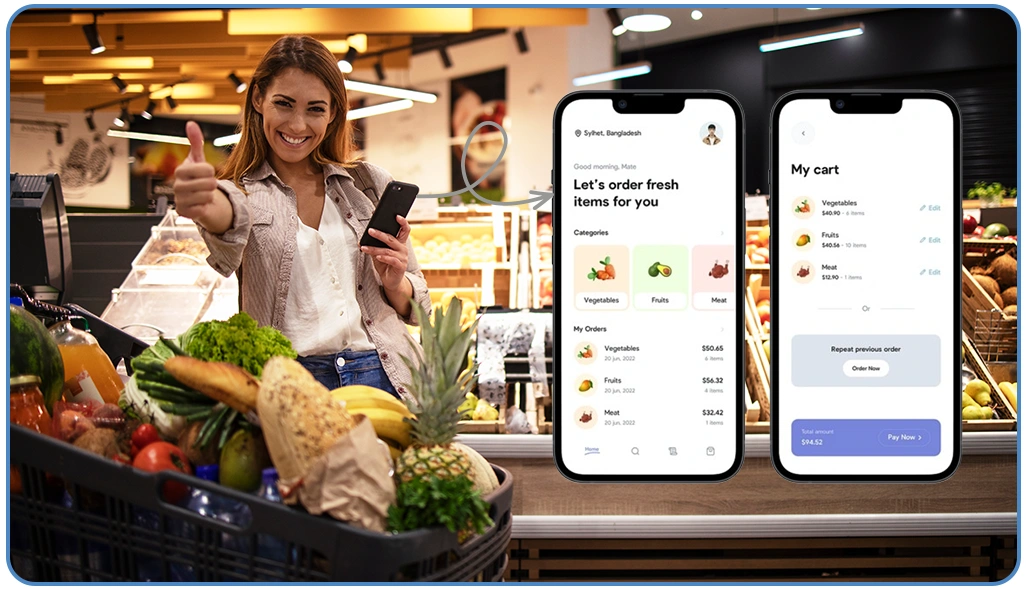
The applications of Real-time grocery price scraping are vast and cover a wide range of business needs. Below are some key use cases for this technology:
1. Price Comparison Websites and Apps
Price comparison websites and apps are one of the most prominent users of Real-time grocery price scraping. These platforms aggregate price data from multiple grocery stores and online retailers, allowing users to compare prices of grocery items in real time. By using a Grocery price tracking API, these websites can continuously update product prices, providing users with the most accurate and current information.
2. E-Commerce Platforms and Online Grocery Stores
For e-commerce platforms and online grocery stores, Real-time grocery price scraping is essential for staying competitive. By constantly monitoring competitor prices using a Grocery store data extraction API, these platforms can adjust their pricing in real time, ensuring they offer the best value to their customers.
3. Retailers and Supermarkets
Supermarkets, both online and brick-and-mortar, use Real-time price scraping for supermarkets to adjust their prices and promotions. By scraping competitor data and monitoring product prices, supermarkets can offer discounts, run promotions, and optimize their pricing strategies based on live market data.
4. Market Research and Analytics Companies
Market research companies use Price scraping API for groceries to collect data on grocery prices, consumer behavior, and shopping trends. This data is invaluable for generating reports, forecasting market trends, and providing insights to clients across various industries.
5. Supply Chain and Logistics
Supply chain managers can use Scrape Grocery data access API to track grocery prices across multiple suppliers. This helps them identify the most cost-effective suppliers and make data-driven decisions about procurement and logistics.
How to Implement Real-Time Grocery Price Scraping?
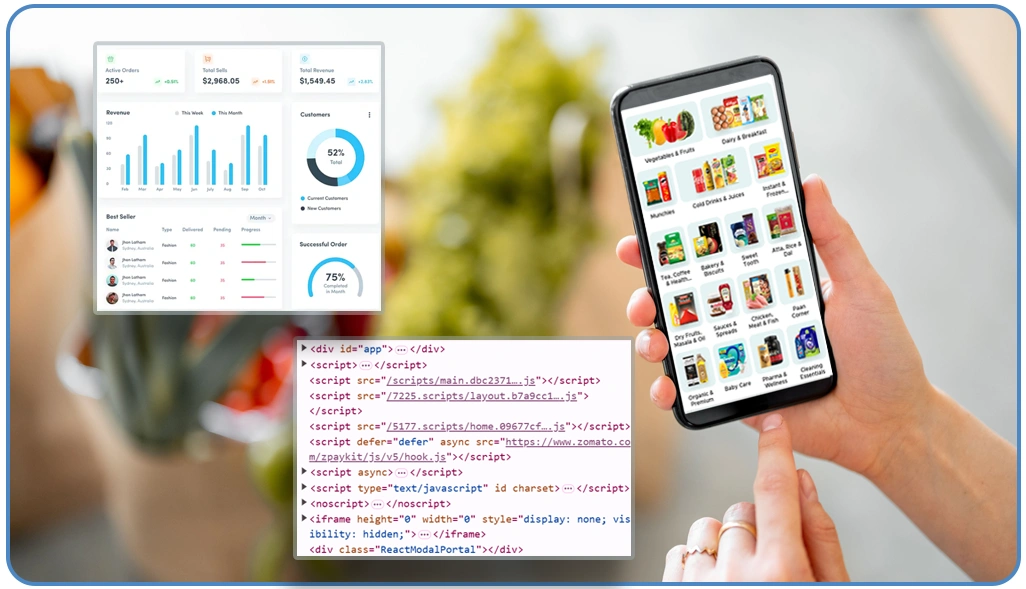
Implementing Real-time grocery price scraping requires a few key steps:
1. Choose the Right API
There are several APIs available for scraping grocery product prices, so it’s important to choose the one that best suits your needs. Some of the popular APIs include the Grocery data scraping API, the Grocery price tracking API, and the Price scraping API for groceries. Consider factors such as the number of supported websites, data accuracy, and real-time capabilities when choosing your API.
2. Set Up a Web Data Crawler
A Web Data Crawler is essential for efficiently navigating websites and extracting relevant pricing data. You can either build your own crawler or use an existing tool that integrates with your Grocery store data extraction API.
3. Monitor Data in Real Time
Once you have your API and crawler set up, it’s crucial to monitor data in real time. This means constantly scraping websites and checking for price updates and product availability. Many APIs provide built-in monitoring features, but it’s important to set up alerts to notify you when there are significant price changes.4. Ensure Data Accuracy and Compliance
When scraping data, ensure that you comply with the terms of service of the websites you are targeting. It’s also important to verify that the data you collect is accurate and up-to-date, as inaccurate data can lead to poor decision-making.
5. Integrate the Scraped Data into Your Systems
After scraping, the data should be integrated into your business systems for analysis, reporting, and decision-making. This could involve feeding the data into a dashboard, CRM, or pricing engine to support dynamic pricing strategies.
Conclusion
Real-time grocery price scraping is poised to shape the future of data access in the grocery and retail industries. The ability to automatically collect and analyze real-time pricing data offers businesses a significant competitive advantage, enabling them to optimize pricing strategies, track market trends, and improve the customer experience.
With the right tools, such as a Grocery data scraping API or a Price scraping API for groceries, businesses can harness the power of real-time data to stay ahead of competitors and make more informed decisions. Whether you're in the grocery retail business, e-commerce, or market research, Real-time grocery price scraping is a game-changer that can revolutionize how you access and utilize data.
If you're ready to unlock the power of real-time grocery price scraping, consider using Web Data Crawler solutions. Contact us today to learn how we can help you integrate real-time price scraping into your business and gain valuable insights into the grocery market.